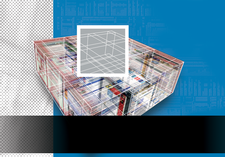Manage projects and time with Collabtive and Kimai
Business Buddies

Whether you are developing software, writing articles, or doing something else, a decent project management and time tracking application can help make your daily computing less stressful and your business more efficient. In this article, we take a look at two such tools: Collabtive and Kimai.
Collabtive [1] is a relatively new project, but it already shows a lot of promise. The Collabtive MySQL/PHP-based project management solution is ideal for workgroups and individual users who are looking for a light-weight tool that is accessible via a web browser. Collabtive offers most of the features essential for efficient project management wrapped into a slick AJAX-ified interface.
Installing Collabtive is an absolute breeze. All you do is download the latest version of Collabtive, unpack, rename the resulting directory to collabtive, and upload it to your server.
You might also need to create a MySQL database for use with Collabtive. To do so, point your browser to http://yourserver/collabtive/install.php and run the simple two-step installation procedure. After logging into Collabtive, you are ready to go.
[...]
Buy this article as PDF
(incl. VAT)
Buy Linux Magazine
Subscribe to our Linux Newsletters
Find Linux and Open Source Jobs
Subscribe to our ADMIN Newsletters
Support Our Work
Linux Magazine content is made possible with support from readers like you. Please consider contributing when you’ve found an article to be beneficial.

News
-
Parrot OS Switches to KDE Plasma Desktop
Yet another distro is making the move to the KDE Plasma desktop.
-
TUXEDO Announces Gemini 17
TUXEDO Computers has released the fourth generation of its Gemini laptop with plenty of updates.
-
Two New Distros Adopt Enlightenment
MX Moksha and AV Linux 25 join ranks with Bodhi Linux and embrace the Enlightenment desktop.
-
Solus Linux 4.8 Removes Python 2
Solus Linux 4.8 has been released with the latest Linux kernel, updated desktops, and a key removal.
-
Zorin OS 18 Hits over a Million Downloads
If you doubt Linux isn't gaining popularity, you only have to look at Zorin OS's download numbers.
-
TUXEDO Computers Scraps Snapdragon X1E-Based Laptop
Due to issues with a Snapdragon CPU, TUXEDO Computers has cancelled its plans to release a laptop based on this elite hardware.
-
Debian Unleashes Debian Libre Live
Debian Libre Live keeps your machine free of proprietary software.
-
Valve Announces Pending Release of Steam Machine
Shout it to the heavens: Steam Machine, powered by Linux, is set to arrive in 2026.
-
Happy Birthday, ADMIN Magazine!
ADMIN is celebrating its 15th anniversary with issue #90.
-
Another Linux Malware Discovered
Russian hackers use Hyper-V to hide malware within Linux virtual machines.

